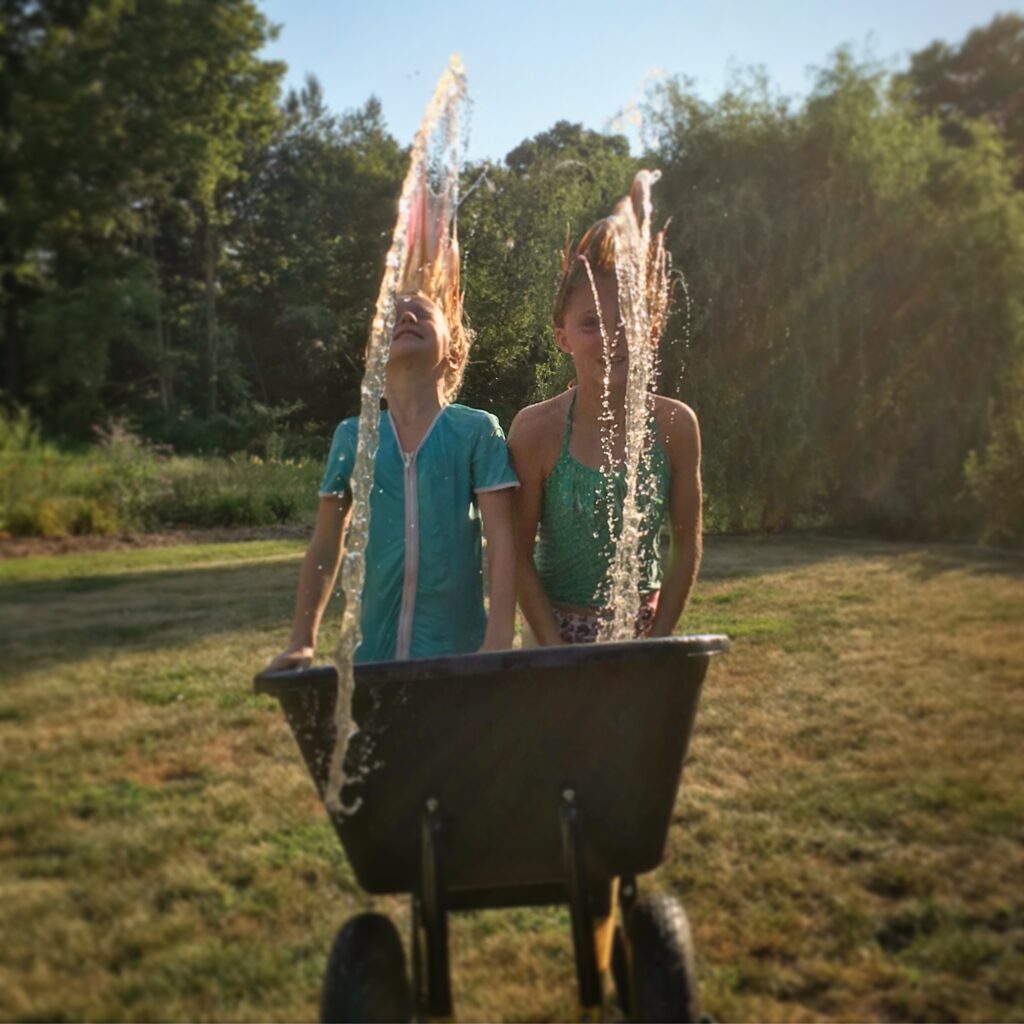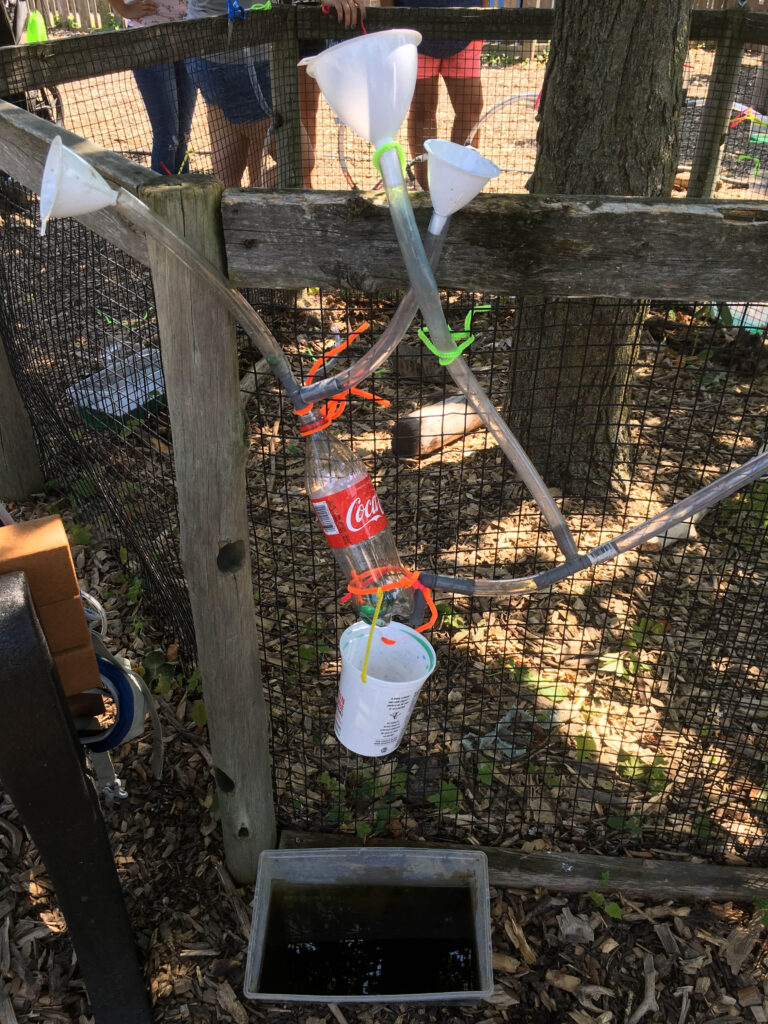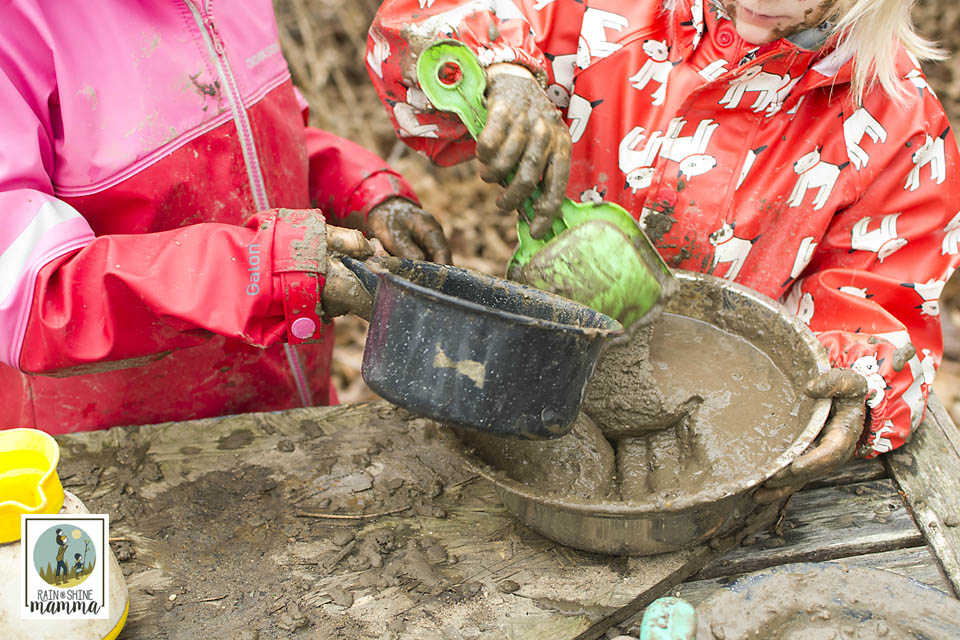Published on July 20th, 2022 Updated on August 25th, 2023 By Linda McGurk
Few things capture children’s imagination like water. They love to pour it, jump in it, spray each other with it, swim in it, blow bubbles in it, throw things in it…well, you get the idea. There’s a good reason for this – water play is packed with sensory experiences and learning opportunities for children. According to the journal Dimensions of Early Childhood, “Free play with water can build the foundation for understanding of a multitude of scientific concepts, including those in physics, chemistry, biology, and mathematics.”
When children move and manipulate water they also practice problem-solving and gross and fine motor skills, which is beneficial to their physical development. And just like adults like to relax by soaking in a hot tub or taking a warm shower, water relieves tension in children. Maybe most importantly – water play is fun and can help your child stay cool on hot summer days. Just be sure to supervise young children, since there’s a risk of drowning even in small amounts of water.
These are five of our favorite water play ideas for summer:
1. Fill up a wheelbarrow
Kids usually don’t need a huge amount of water to enjoy themselves, so don’t worry if you don’t have access to a pool. Oftentimes, just filling up a wheelbarrow with water in the backyard is enough to keep kids entertained for hours. The beauty of this pastime is that you don’t need a lot of supplies, just a wheelbarrow and maybe some loose parts, like empty containers for scooping the water.

2. Ice excavation
Ice is a fun play material that can help kids stay cool on sizzling summer days. For this activity, collect some empty and clean plastic containers and fill them with water. Stick a small object, like a toy, pieces of legos, a flower or some edible berries in each container of water and put them in the freezer overnight. Once the ice is frozen solid, empty out the containers and challenge the kids to find a way to get the items out of the ice. Depending on your child’s age, they may be able to use tools like a screwdriver and hammer, or they may prefer to just run the piece of ice over their skin and watch it melt slowly. There’s no right or wrong way to do this, so just let your child lead the way.
3. Create a water wall
Kids love pouring water and watching it move through different obstacles. A water wall packs both of these activities into one place, and you don’t need mad construction skills to create one. A water wall is an easy DIY project that can be constructed using a variety of backings, for example a chain link fence, wood pallet, latticework or wood fence. Once you’ve decided on the backing, scavenge for materials that you will attach to the wall. A few popular ideas are: clean, recycled plastic containers (milk jugs, yogurt and butter containers etc), pool noodles, PVC pipe, funnels and rain gutters. Depending on the backing, you can either use zip-ties, heavy-duty wire or a staple gun to attach the containers. Happy Hooligans and Little Bins for Little Hands both have great ideas for getting started.

4. Sink or float
Sink or float is an old classic with almost endless variations. All you really need for this activity is a bucket or small tub of water, and a variety of objects to try out. Before you get started, talk about what makes something sink or float. (Hint: it depends on the object’s density, i.e. how tightly packed its molecules are, not necessarily its weight.) While young children may not grasp this concept, they can still make guesses about which items will float and which ones will sink. They will also love collecting the items, for example a pine cone, rock, piece of bark, flower, leaf, stick, coin, paper clip, etc. For a more advanced sink and float experiment, check out this post from Easy Science for Kids.
5. Make a mud kitchen
Another reason why water is such a great play material is that it makes mud! With a mud kitchen in the backyard, your kids will have a place for making mud pies, mud chocolate, stone soup and other yummy culinary creations. Making a mud kitchen can be as simple as placing some wooden boards over a couple of tree stumps, cinder blocks or bricks, and adding old pots, pans and other kitchen utensils. Or, you can go all out and be inspired by these elaborate 30 mud kitchen ideas, or do a search for mud kitchens on Pinterest – there are a number of boards specifically dedicated to this topic. Many of the materials needed for a mud kitchen you or somebody you know will likely have sitting around, so try to reuse and repurpose as much as possible. Flea markets are also a great place to find mud kitchen accessories.

